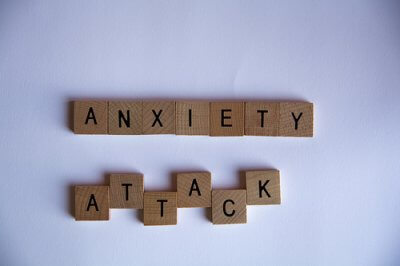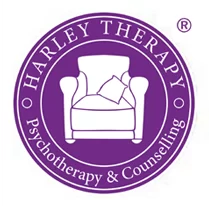How to Stop an Anxiety Attack

By: Practical Cures
by Andrea M. Darcy
Anxiety is bad enough.
When it turns into anxiety attacks, we can feel our life is in danger (about a quarter of visits to A&E for heart attacks end up being anxiety).
7 Ways to Stop an Anxiety Attack
What practical steps can you take to stop an anxiety attack?
1. Accept the experience.
For most of us, our inbuilt reaction to feeling an anxiety attack coming on is to panic and try not to let it happen.
The result? We feel more anxious. And the more we fight the attack, the more overwhelming it becomes.
The truth about anxiety is that it is as much a physical experience as a mental one. Your primal brain has triggered the fight, flight, or freeze response, which releases a cocktail of chemicals into your body.
You CAN’T just throw an off switch on all that. You can slow the attack down and have it stop faster with proper techniques. But, to an extent, you have to ride the wave.

By: hansol
The more we lean in and accept that we are having a fit of anxiety, the less anxious we feel. It’s not the end of the world, it’s an anxiety attack. And like everything in life, the end will come. Think of each anxious thought as a wave that you are riding. Each wave dies down on the beach. No wave is forever.
2. Recognise you are not the anxiety.
Step back and recognise the anxiety as separate from you.
The anxiety does not control you. You are here, the anxiety is there. And you are still in charge of your life, even though anxiety is temporarily flooding through you. You can still choose how to respond to the anxiety.
Some find it helpful to even talk to their anxiety (this can be done quietly, in your head, if you are not alone). “Hello anxiety, it’s you again. Okay. Well I accept you are here, but I also know that you are not permanent, and that whatever you are going to make me think and feel in the next few minutes is anxiety talking, not reality, or who I am.”
3. Bring mindfulness to the experience.
Be fully present with what is happening while not judging it. Start, for example, noting your exact symptoms. Your heart is beating, you are breathing fast. Your neck is tense. Again, accepting the experience tends to lessen anxiety.
Try to actually catch each anxious thought, and see it without judgement. Think of looking at a stormy sky. You see the cloud, but even if it shaped like a wild horse or beast, you know it is just a cloud, and let it float by. You are an anxious thought, and I will let you go.

By: Tony Hall
Or again, see anxious thoughts as a series of waves. Different sizes, different strengths, but you are going to just breath your way through first one, then another. You go along to shore. No wave lasts forever.
A popular and calming Youtube video on this topic can be found here.
4. Over focus on one thing.
Another way to use mindfulness to slow anxiety is to focus on a particular object with all your attention. It can be whatever is closest.
Say, for example, anxiety hits on crowded train. Focus on the shoes of the stranger across from you in a packed train – the colour, the laces, the cracks in the leather. Notice the tiny movements when the passenger shifts in his seat. Imagine what the shoes would feel like to wear.
You can also focus on a phrase. This might be a mantra you like, or a verse. You might repeat a calming poem, for example, again and again to yourself.
5. Activate the parasympathetic nervous system.

By: Bonnie Brown
When you have an anxiety attack, your sympathetic nervous system is activated, hence the pounding heart, edginess, sweating, etc.
What works best here is to trigger the counteractive parasympathetic nervous system (PNS). This system slows your heart rate and lowers anxiety.
Things that can stimulate the PNS include:
- deep, steady breathing
- breathing slowly through a straw
- running your finger repetitively along your upper lip/ just below your nose to activate parasympathetic nerves
- gentle touch, so hugging yourself/stroking your arms/stroking your head (or having someone else you feel safe with hug you, etc)
- yogic stretching (stretches that are held and that you breathe through).
Another wonderful technique that does not take long to learn and is used by therapists is called progressive muscle relaxation. It involves tensing than releasing muscle groups.
6. Use CBT techniques to change your thinking.
Cognitive behavioural therapy (CBT) focuses on the connection of thoughts, feelings, and actions. In the case of an anxiety attack, our anxious thoughts trigger our body to be stressed. If we can start to change the thoughts, it can help stop the ‘fight, flight, or flee’ response.
Here is a condensed version of a CBT ‘thought record‘ you can you use when having an anxiety attack:
- what is the exact thought making me anxious?
- and the proof I have that this thought is true?
- what is the exact opposite thought to this one?
- and what proof do I have that that exact opposite thought is true?
- can I find a balanced thought in the middle of these two extremes?
It sounds complicated, but with practise it can start to feel second nature.
Let’s do a quick example:
You hear your panic attack thought that ‘my partner will dump me over this fight and I will be alone forever’ and you recognise that the ‘proof’ is that he said ‘don’t make me dump you’. You actually can’t prove you’ll be alone forever, in fact the longest you’ve been single is about three years but then you tend to meet someone. The exact opposite thought would be ‘we will stay together forever’. The proof you have there is that you did fight before and not break up, and you’ve been together for a few years. So suddenly you see that the first big anxious thought is as likely as its opposite, and you start to feel less anxious. So you choose a balanced thought — ‘nobody knows the future, but we have as much a chance as anyone of making this work’.
7. Deeply focus on a ‘happy place’ visualisation.
Visualisation is picturing something so strongly in your mind you can ‘feel’ it.
The middle of an anxiety attack is obviously no time to come up with a visualisation.
But if you are prone to panic attacks or anxiety attacks, it can be a good idea to come up with one when you are doing well, that you can then use when anxiety next hits.
The idea here is to find an image or scene that makes you feel very relaxed and very good. This could be something like sitting on a beach, being in a field of flowers, holding your child when they were an infant.
Practise this visualisation often, making it as vivid as possible. Add colours, sounds, perhaps even smells. The idea is that it becomes so easy to slip into a feel-good visualisation you can do it even when anxious.
Keep building your anti-anxiety toolbox.
As you can see, there are actually several techniques that can help stop an anxiety attack.
Of course we are all unique. Also, what works for one attack might work less for the next.
So the best approach for learning to stop an anxiety attack is to try as many of the above techniques as possible, and to keep building your anti-anxiety toolbox. You might learn new techniques elsewhere, or fine tune one of the above in a way that suits you. Wonderful.
The funny thing about anxiety attacks is that the more we decide to approach and work with them instead of trying to avoid them or ‘fight them off’, the less of them we begin to have.
Is your anxiety stopping you from living your daily life? Or do you worry that you have an anxiety disorder? Harley Therapy connects you with highly trained counselling for anxiety from our central London clinics. Not in London? Our therapy platform puts you in touch with online therapists across the UK.
 Andrea M. Darcy is a mental health and wellbeing expert and writer. She also runs a consultancy helping people find their perfect therapy and therapist. As someone who suffered anxiety since she was a child, these are all her tried and trusted tools she is sharing with you! Follow her on Instagram for more useful life tips @am_darcy
Andrea M. Darcy is a mental health and wellbeing expert and writer. She also runs a consultancy helping people find their perfect therapy and therapist. As someone who suffered anxiety since she was a child, these are all her tried and trusted tools she is sharing with you! Follow her on Instagram for more useful life tips @am_darcy






These are really good, practical tips that would be very effective.
Glad to be of help.
Thank you for writing this article, I find it very helpful. Also love all of the other ones about fear of intimacy. Been dealing with a friend who has a bad case of fear of intimacy and abandonment issues. Thought I got thru him but he back away. But I do love him very very much. Dont know if I should keep trying or give up.
It’s a hard one Jackie. He has to do what feels right for him. And the only thing you really can control here is your side. Is this a pattern for you, to go for unavailable sorts? If so, worth exploring where that all comes from.
Thank you. I’ve been experiencing these attacks more and more frequently now and I feel like it’s the end of my world each time. I’ll try some of these
Hi Ana, seeing this second addiction. Again, see your doctor. But to say that thoughts that it’s the end of the world often is anxiety, yes.
you made me cry.because every word you wrotè was true.
Thank you for the comment Rita, we hope the article helps.
Thankyou very much for all your clear explanations, tips and for writing everything in an open, positive way. I have had many issues to deal with in my life and when I’ve had a bad time, I often seek out your blog and try to increase my understanding of things and of course expand my skills in dealing with situations/emotions. I have developed my own toolbox of strategies over my 57 years and find it wonderful to find still more!!!
Life is a constant field of progressions and adaptations. Thankyou for helping me to feel that I’m not alone.
With great respect
Lori
So glad to be of help Lori, that’s why we created this blog, as outreach. So it really encourages us to hear this. Best, HT